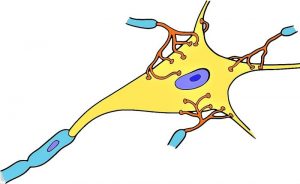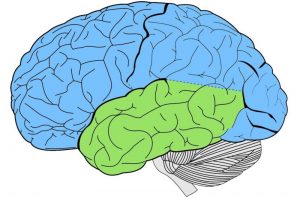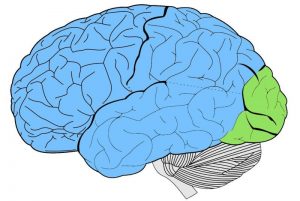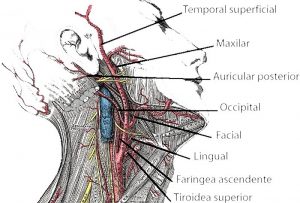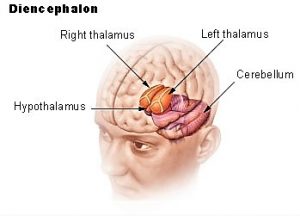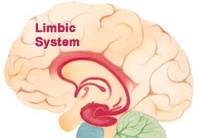Cranial nerves
Cranial nerves or cranial pairs are a set of 12 pairs of nerves that arise directly from the brain. The first two olfactory and optic nerves arise from the brain, while the remaining ten arise from the brainstem. The names of the cranial nerves are related to their function and are also identified numerically in Roman numerals ranging from I to XII.
What are cranial nerves?
Cranial nerves are the nerves located at the base of the skull that allow us and facilitate us to perform all our basic functions of both, muscles and viscera that make up the human body.
The cranial nerves are numbered by their location in the brainstem whether superior to inferior, then medial to lateral and the order of their exit from the skull which may be anterior to posterior.
Which are the cranial nerves?
The cranial nerves are as follows:
- Olfactory nerve or cranial nerve I: transmits nerve information detected by smell and is therefore an afferent fiber. It is the shortest of all pairs.
- Optic nerve or cranial nerve II: it is an afferent fiber and transmits information to the brain from the eye.
- Oculomotor nerve or cranial nerve III: it is called common ocular motor nerve and sends orders to the muscles involved in eye movement, causing the pupil to dilate or contract.
- Trochlear nerve, pathetic or cranial nerve IV: participates in the eye movement. It arises in the midbrain.
- Trigeminal nerve or cranial nerve V: it is a mixed cranial nerve because it has motor and sensory functions. It sends orders to muscles for chewing and collects tactile, proprioceptive and pain information in the face and mouth.
- Abducent nerve or cranial nerve VI: causes the eye to move.
- Facial nerve or cranial nerve VII: sends commands to muscles of the face to elaborate facial expressions and collects taste data from the tongue.
- Vestibulocochlear nerve or cranial nerve VIII: collects information from the auditory area. Receives data that is heard and allows balance to be maintained.
- Glossopharyngeal nerve or cranial nerve IX: it is sensitive and motor and influences the tongue and pharynx. It receives information from the taste buds.
- Vagus nerve or cranial nerve X: carries orders to the muscles of the pharynx and larynx. Receives taste information from the epiglottis.
- Accessory nerve or cranial nerve XI: this is known as the spinal nerve. It activates the muscles of the trapeze and sternocleidomastoid, to move the head and shoulders.
- Hypoglossal nerve or cranial nerve XII: activates the muscles of the tongue in order to swallow.
Function of cranial nerves
The function of the cranial nerves goes according to each cranial pair. In this way, we can say that the functions are:
- Cranial nerves I and II: these are the olfactory and optical They include the common ocular motor nerve, the external ocular motor nerve and the trochlear nerve. They work by controlling the sense of smell and carrying information that enters the eyes to the brain.
- Cranial nerves III, IV, and VI: control movement. These include the trochlear nerve and the external ocular motor nerve. Cranial nerve III also regulates the ocular motor nerve, eye movement, and pupil. They control the pupil when there is too much or too little light.
- Cranial nerve V: is the trigeminal nerve and is responsible for controlling touch, sensations of pain in the face and head. It also controls the muscles that are used to chew, close the jaws and facial sensitivity.
- Cranial nerves VII and VIII are the facial nerve and cochlear vestibule. It controls taste, receives information from the ear and controls facial expression.
- Cranial Nerves IX and X: The glossopharyngeal nerve controls swallowing function, taste in the tongue, tonsils, and pharynx. Controls pain and digestion, heart rate.
- Cranial nerve XI: This is the hypoglossal nerve and controls the different muscles in the tongue.
Real and apparent origin
Each skull pair has a real and an apparent origin. The apparent origin is the place of emergence of the nerves through the encephalic mass and the real origin is the place where the nerve fibers that make up the nerve originate.
Classification of cranial nerves
Cranial nerves can be classified into:
- Sensitive nerves: Olfactory, optical, acoustic stato.
- Motor nerves: Common ocular motor, external ocular motor, pathetic, spinal, hyoglossus.
- Mixed nerves: trigeminal, facial, glossopharyngeal, vagus nerve.
Nuclei
The sensitive nuclei are the somatic afferents and the visceral ones. They include all the sensitive parts that a cranial pair has in the nerve cells which form prolongations, thus creating first-degree neurons, second-degree neurons and third-degree neurons in which the axons end up in the cerebral cortex.
Pathologies
The disorders that occur in them can affect taste, sight, facial sensitivity, facial expressions, hearing, speech and balance, even some of them can affect the muscles of the neck. Some of the pathologies that can occur in the cranial nerves are the following:
- Hyposmia: affects olfactory stimuli and the olfactory nerve. It damages the mucous membrane and the olfactory bulb.
- Hyperosmia: increased perception of smell.
- Dysosmia: perception of an aberrant smell.
- Agnosia: particular smells cannot be recognized.
- Defects in the field and visual acuity such as Argyll Robertson’s pupil and Horner’s Syndrome.
- Retinal detachments, toxoplasmosis and retinitis.
- Optic neuritis that damages the optic nerve.
Exploration of cranial nerves
The scan is performed to determine the presence of a disease affecting the cranial nerves. Some of the methods are:
- Offer the patient smells to assess their ability to smell.
- Examinations of visual acuity, campimetry and fundus of the eye.
- Eyelid inspection.
- Examination of fixation and sustained look.
- Evaluation of pupillary size and symmetry.
- Photo motor and consensual examination.
How to cite this article?
Briceño V., Gabriela. (2019). Cranial nerves. Recovered on 3 May, 2025, de Euston96: https://www.euston96.com/en/cranial-nerves/
